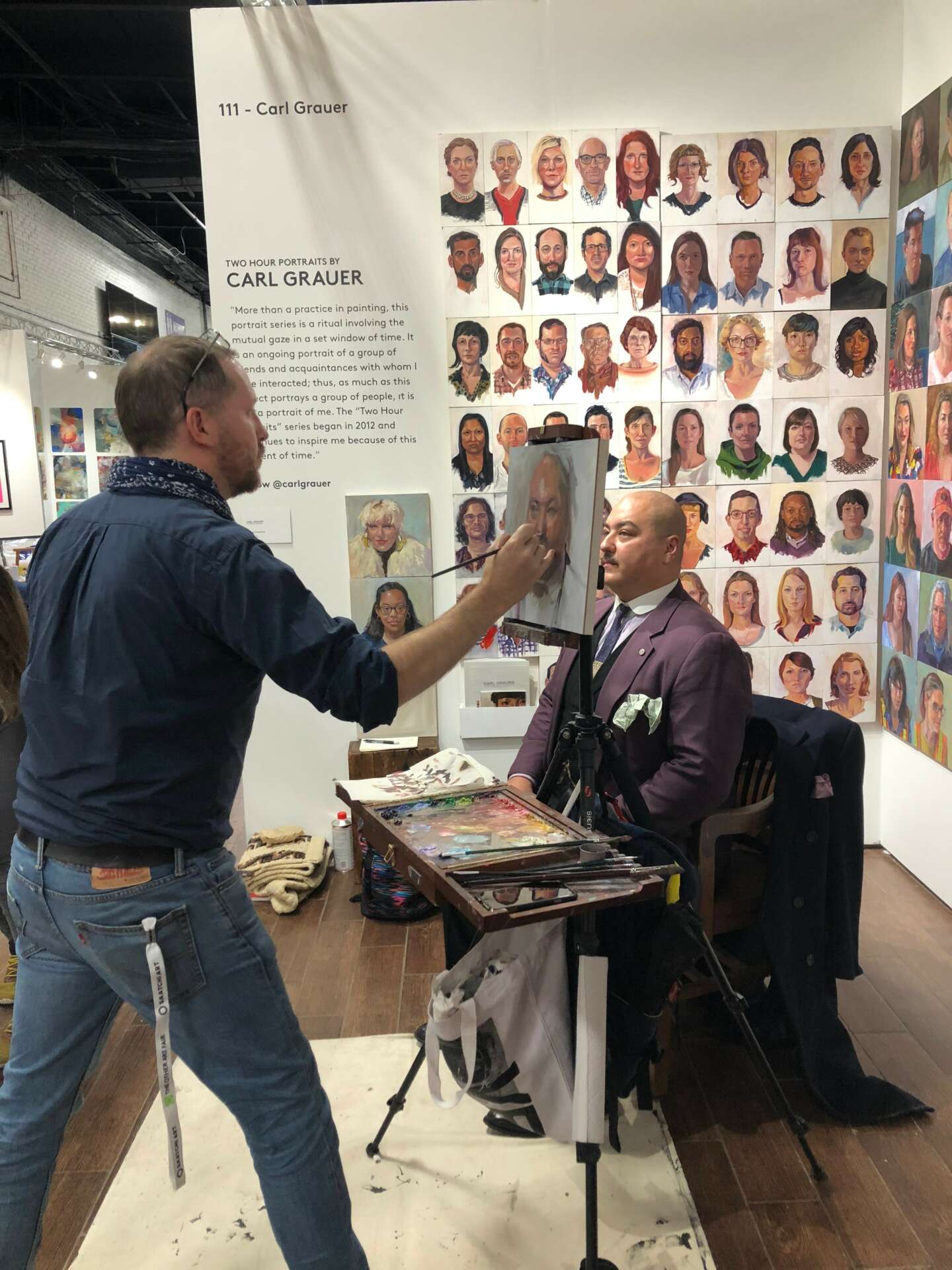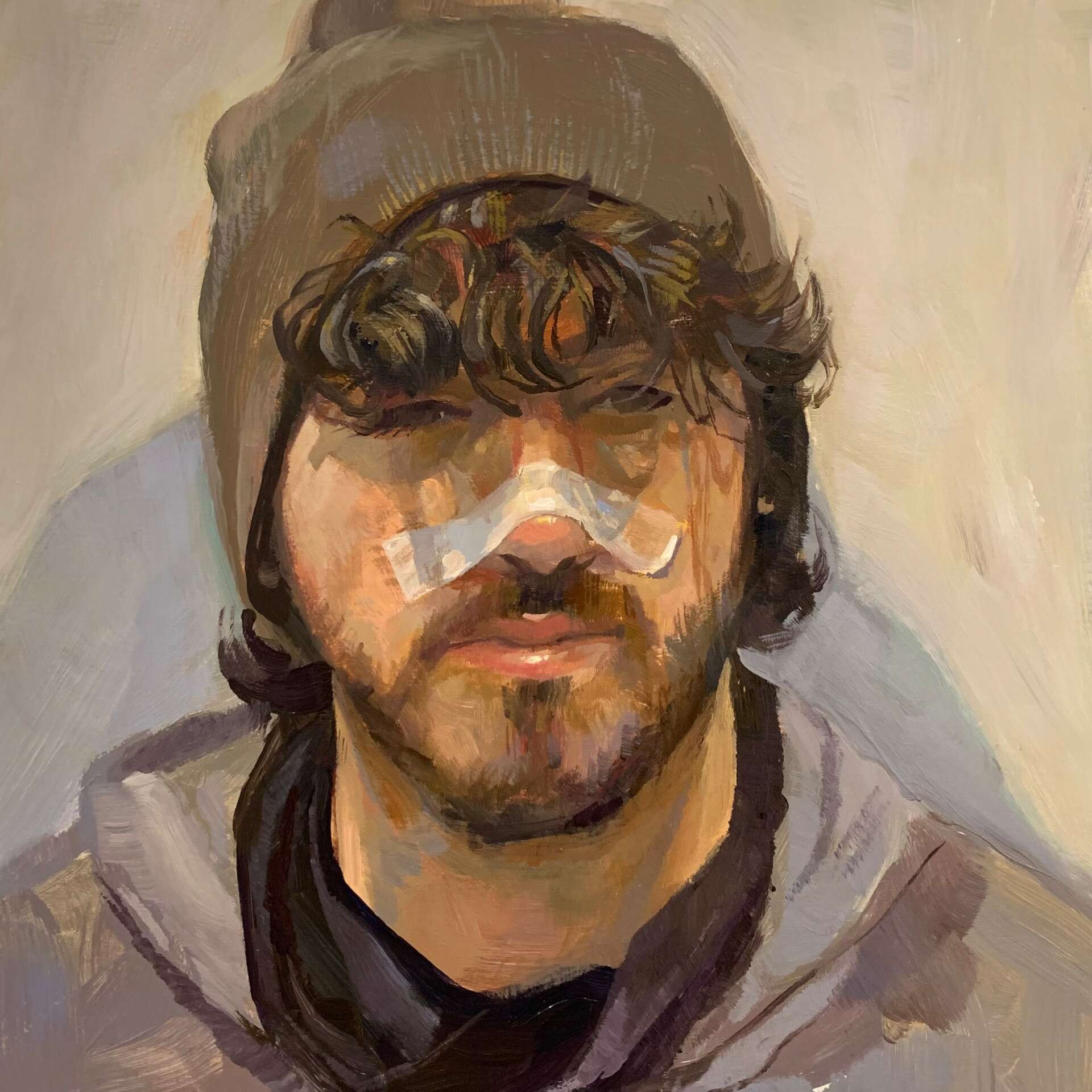We recently connected with Carl Grauer and have shared our conversation below.
Hi Carl, thanks for joining us today. We’d love to hear about a project that you’ve worked on that’s meant a lot to you.
My mother was diagnosed with Alzheimer’s several years ago. In 2017 as my mother’s condition was worsening she and my father made the decision to move to Poughkeepsie, New York where I live with my husband. My mother’s condition escalated quickly in the past few years and my father, husband, and I were placed into caretaking roles during the pandemic. It was a difficult scenario as many family relationships are fraught with complexity surrounding the end of life. It is a tangled dynamic of loss and acceptance, to say the least. Through the experience, a series of works grew from the need for solace and subject matter that would provide more comfort. I retreated into the solitude within our home and the space within which my husband and I live. In this body of work,“A Qu(i)e(t)er Interior,” I painted interiors of our home to create perceived emotions among materials, beings, and the light that was cast among them. It really ended up being a story of light and longing for catharsis while mourning the incremental loss of my mom. This series of work is a response to those feelings and a search for self-care. In this particular work, I observe the relationships among materials, beings, and the spaces in which they exist and a perspective that tracks varied emotions, different points of view, and how the light is experienced within. Both a place of comfort and safety, our home provided a stage to play out this series of stories about the passage of light. Light passes through the space within our dining room. It shifts with the time of day as the objects rest upon the table leaving remnants of our shared lives and the symbols they represent. Dinners are shared and cleared. Candles are lit and extinguished. I also explore the value and temperature of the light as it shines onto the wall, through the window, onto the hardwood floor, and onto the table; a table my father and I made. A table with which we shared meals, played games and conversed over. We care for each other within this space. Within this work, I ritualize the sacred moments we share. Representations, whether visual or sensory, possess an equivocal relationship with actual lived practices. The narrative of these senses is largely formed and they reveal the manner of and mortality with which these interiors exist.
I found peace in observing the changes in light and observing with slowness and mindfulness that come during times of meditation. From those moments, I dove into my intrigue and empathy with the quiet and how time and space hold different meanings for a person living with Alzheimer’s: the light shining in the window, incense burning, a candle lit, and then, without warning, it expires sending smoke swirling upwards.

As always, we appreciate you sharing your insights and we’ve got a few more questions for you, but before we get to all of that can you take a minute to introduce yourself and give our readers some of your back background and context?
I grew up in Wilson, Kansas, a town of 800 people. I always like to say I grew up between the “N” and the “S” of Kansas because it was in the absolute middle of the state. After childhood, I completed my bachelor’s degree in human biology and MFA in medical illustration at the Universities of Kansas and Michigan, respectively. Eventually finding my way to Brooklyn, New York, I worked in advertising for many years and co-owned a small business offering second-hand goods, antiques, collectibles, and art all the while wishing for the courage to take my work and art more seriously. Upon the sudden death of my brother in 2012, I committed my life to making art. Now I am a practicing artist based in Poughkeepsie, New York in the beautiful Hudson Valley. I primarily work in oil representing the world around me by painting from observation, but at times I explore surrealism in my paintings. I show work locally, nationally, and internationally, including exhibiting with the Carrie Haddad Gallery in Hudson, New York, and the Royal Society of Portrait Painters in London. Additionally, I paint commissions such as portraits (people and animals), landscapes, or other people/figures, places, and objects beloved by my clients. Originally trained as a medical illustrator, my education was extended through various representational drawing and painting studios and alongside other practicing artists.
With over ten years of experience with the art of portraiture, I have worked on many commissions. There are many ways in which to engage with me through a commission. The first is a longer, more traditional practice over a set amount of time, which may involve multiple sittings/sessions. The other involves painting subjects within two hours. In this series, “Two-Hour Portraits,” I invite anyone to sit. It is a focus on mindful strokes laid with purpose and with energy. This series continues to grow and has become a portrait in and of itself of those with whom I have interacted. This portrait project began in 2012 and continues to excite me because of this time element. It documents sitters in a specific amount of time and also my evolution as a painter throughout my lifetime. To date, I have painted more than 400 Two-Hour Portraits and aim to paint upwards of 1500 in my lifetime.


Can you tell us about a time you’ve had to pivot?
During 2020 when everyone was quarantined, there were some major adjustments that I needed to make because of my career as an artist. Much of my career was sustained by commissions prior to that moment. It was clear there were a lot of unknowns such as how long this new normal would continue. During that time I had to make some bold choices to sustain my art but also supplement my income. Before the pandemic, portrait sittings always took place in person. In March 2020, I expanded my Two-Hour Portrait series to incorporate virtual sittings as a way to create connection and mark the time during an increasingly isolating and fraught moment in our world’s history. With the original idea, I was painting two virtual portraits almost every day. I completed more than 100 of these portraits from sitters across the globe who learned of the project through social media. Prior to the pandemic, I had painted 300 two-hour portraits since the project began in 2012. These virtual two-hour portraits began as a way to connect with people despite the physical distance. It offered the sitter something unique to do while they were isolating, as well as a way for me to document this exceptional time. I wanted to explore how I can make art reflect the constraints of the moment. Not only had it given me the opportunity to connect during my day-to-day life, but I had the chance to meet amazing people from around the globe, all while evolving my art practice. Although this might have been a great temporary pivot, it became unsustainable financially. The second component of this major professional pivot during that time period was my return to teaching. It was fortuitous that I was able to pick up several adjunct positions teaching drawing and painting at the college level. This further impacted my practice as it was a way to communicate about the work and share my knowledge of painting and illustration. Although it was intended to be a temporary need, it has continued to be a critical component of my career.


Is there a particular goal or mission driving your creative journey?
My particular goal or mission on this journey is to follow my intuition and to make a contribution to cultural conversations through art. Ultimately within my art practice, I follow the path of consistency and persistence knowing that sometimes my paintings and drawings will not work but often they do; allowing both to happen and finding contentment and gratitude within this life of multiplicities.


Contact Info:
- Website: www.carlgrauer.com
- Instagram: @carlgrauer
- Youtube: https://www.youtube.com/watch?v=5JBg183KJKw


